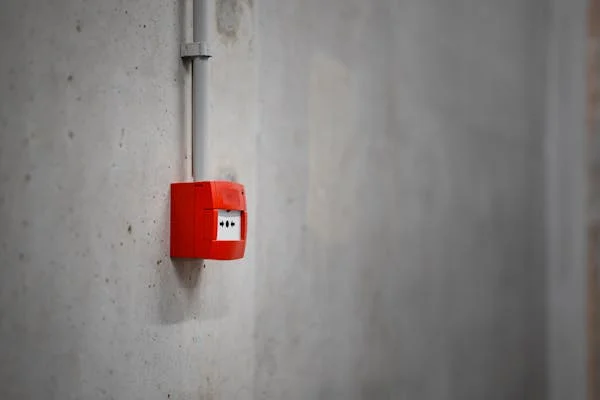In today’s fast-paced world, information spreads quickly, but in times of crisis, it’s essential to ensure that the right messages reach the public promptly. The Emergency Alert System (EAS) is a critical tool for this purpose. With the evolution of digital platforms, Zeno.FM has integrated the EAS, making it a valuable resource for broadcasters and listeners during emergencies. This system offers a way to send vital notifications, keeping the community informed and safe.
What is the Emergency Alert System (EAS)?
The Emergency Alert System (EAS) is a national public warning system that enables authorities to communicate important safety information. Traditionally, the EAS was limited to television and radio broadcasts, but its scope has expanded into the digital realm. Platforms like Zeno.FM now offer online radio stations a chance to provide immediate alerts, helping to ensure the safety of listeners worldwide.
Evolution of the Emergency Alert System
The EAS was introduced in 1997, replacing the Emergency Broadcast System (EBS). Its primary aim was to provide a reliable way to distribute urgent messages related to natural disasters, security threats, or other emergencies. The system has continually evolved to adapt to new technologies, including the internet and social media.
The Role of Zeno.FM in the Emergency Alert System
Zeno.FM is an online platform that allows anyone to create and broadcast live or pre-recorded radio stations. With the integration of the EAS into Zeno.FM, broadcasters can alert their audience about immediate threats, ensuring they stay informed regardless of their location.
How Zeno.FM Enhances Public Safety
Zeno.FM helps ensure public safety by enabling broadcasters to provide real-time emergency alerts. Whether it’s a severe weather warning or a local security alert, the system delivers updates directly to listeners. This makes Zeno.FM a critical communication tool in times of crisis.
Key Features of Zeno.FM’s Emergency Alert System
Zeno.FM’s Emergency Alert System includes several essential features, making it a powerful tool for both broadcasters and listeners:
Real-Time Alerts
Alerts are sent instantly across the network, ensuring that listeners are updated with the most current information. This is especially important during fast-moving emergencies, such as wildfires or tornadoes.
2. Automated Notifications
The system allows for automated broadcast interruptions, which ensure critical alerts are delivered without delay or manual intervention.
3. Global Reach
Zeno.FM broadcasts to a global audience, meaning emergency alerts can reach people across the world, keeping them informed regardless of location.
4. Multilingual Support
Zeno.FM supports multiple languages, ensuring that broadcasts can reach diverse communities and provide emergency information to a wider audience.
5. Seamless Integration
Zeno.FM’s Emergency Alert System integrates easily with existing station setups, requiring little technical expertise from broadcasters while delivering efficient service.
Benefits of the Emergency Alert System on Zeno.FM
The EAS on Zeno.FM offers various benefits to both broadcasters and listeners. Here’s a look at the key advantages:
1. Improved Public Safety
One of the most important benefits of the EAS on Zeno.FM is its ability to enhance public safety. By providing timely alerts, Zeno.FM ensures that people receive important safety information and can take necessary actions to protect themselves.
2. Accessibility
Zeno.FM’s digital platform ensures that emergency alerts are accessible to anyone with an internet connection. This wide reach means more people can stay informed, whether they’re at home, at work, or on the go.
3. Compliance with Regulations
Many countries require broadcasters to provide emergency alerts during certain types of incidents. Zeno.FM makes it easier for online broadcasters to comply with these regulations, ensuring they meet their legal responsibilities.
4. Building Audience Trust
By providing accurate and timely emergency alerts, broadcasters can build trust with their audience. Being a reliable source of information can help a station gain more listeners, particularly during times of crisis.
5. Automated Delivery
Zeno.FM’s EAS ensures that important messages are delivered automatically. Broadcasters don’t need to worry about manually inserting alerts into their broadcasts, which can be particularly useful during fast-moving emergencies.
The Process of Setting Up the Emergency Alert System on Zeno.FM
Setting up the Emergency Alert System on Zeno.FM involves several essential steps. Here’s a detailed guide for broadcasters to follow:
1. Create a Zeno.FM Account
To get started, you first need to create an account on Zeno.FM. This is the platform where you’ll manage your station and configure your emergency alerts. It’s essential to provide accurate station information, such as your station name, genre, and a brief description.
2. Integrate EAS Equipment
Next, you’ll need to obtain an EAS encoder/decoder, which is the hardware that will allow your station to communicate with authorized alert sources, such as FEMA or NOAA. This device is crucial for receiving and sending alerts to your audience.
3. Set Up Broadcast Software
Zeno.FM supports several broadcasting software programs, such as BUTT (Broadcast Using This Tool). These tools help you manage your live or pre-recorded broadcasts. The software should be connected to your EAS equipment for automated alerts.
4. Configure Your EAS Settings
Once your equipment is connected, it’s time to configure your EAS system. Ensure that you’ve linked your EAS device to an authorized source and that it’s set up to broadcast alerts automatically. It’s also important to test your setup regularly to ensure everything works properly.
5. Test the System Regularly
After everything is configured, conduct regular tests to ensure that your EAS is functioning correctly. This will help avoid any technical difficulties when an actual emergency arises.
Best Practices for Using the Emergency Alert System
To ensure that your EAS system on Zeno.FM is effective and reliable, follow these best practices:
1. Use Simple and Clear Language
During emergencies, clarity is crucial. Ensure your alerts are written in simple, direct language that can be easily understood by your audience.
2. Test Alerts Regularly
Regularly test your EAS setup to ensure that it works correctly when needed. Routine testing helps to identify any potential issues before they become a problem during an actual emergency.
3. Provide Information on How to Respond
When delivering an emergency alert, always provide instructions on how listeners should respond. This might include evacuation routes, shelter locations, or emergency phone numbers.
4. Monitor Alerts and Responses
It’s important to monitor the delivery of alerts and track how they are received by your audience. This ensures that your system is functioning properly and that listeners are getting the information they need.
5. Keep Your Equipment Updated
EAS systems and equipment require maintenance and updates to stay functional. Regularly check for updates to your software and hardware, and make sure your system is always ready to respond in case of an emergency.
Potential Challenges and Solutions
While the EAS on Zeno.FM offers significant benefits, there are a few challenges that broadcasters might face. Here are some common challenges and how to address them:
1. Technical Difficulties
Sometimes, EAS systems may experience technical issues, such as connectivity problems or software glitches. To prevent this, ensure your system is regularly tested, and always have a backup plan in place.
2. Language Barriers
In multilingual regions, it’s important to ensure that your alerts are accessible to everyone. Consider providing alerts in multiple languages, or using services that offer real-time translation during an emergency.
3. System Overload
During large-scale emergencies, many users may attempt to access the alerts at once, potentially overloading the system. It’s important to monitor traffic and consider scaling up your broadcasting capacity during periods of high demand.
How the Emergency Alert System on Zeno.FM Enhances Community Support
Zeno.FM’s integration of the EAS is more than just a tool for public safety—it’s also a means to foster community engagement. By broadcasting emergency alerts, Zeno.FM stations become vital lifelines during times of crisis. This support helps communities come together, take action, and stay safe.
Community Collaboration
Zeno.FM stations can collaborate with local authorities to ensure that important messages are delivered effectively. These collaborations can strengthen the relationship between broadcasters and their audiences, helping communities stay informed and united.
Building Stronger Networks
By offering real-time updates and valuable information, Zeno.FM fosters stronger connections with its listeners. This connection builds trust and helps listeners feel more secure during emergencies.
Conclusion:
The Emergency Alert System on Zeno.FM plays a vital role in ensuring public safety. With its real-time notifications, global reach, and seamless integration, Zeno.FM provides a reliable way for broadcasters to deliver emergency alerts to their audience. By adopting best practices, maintaining equipment, and following the necessary steps for setup, broadcasters can enhance public safety, build trust with their listeners, and comply with essential regulations.
Zeno.FM’s Emergency Alert System is more than just a broadcasting tool—it’s an essential service that helps keep communities informed and safe during times of crisis. Every broadcaster should integrate this system to make a significant impact on public safety and enhance their station’s credibility as a reliable information source.





